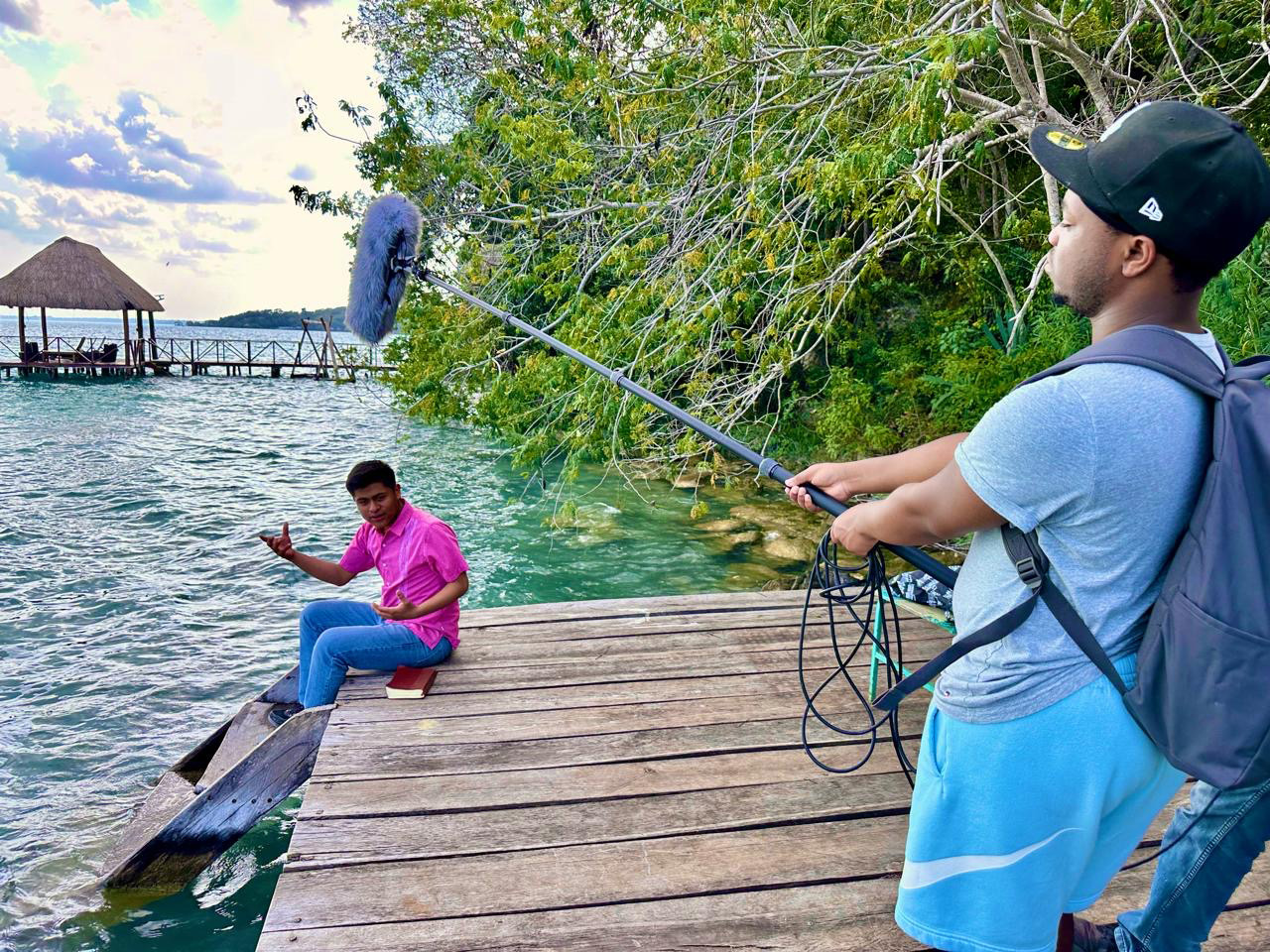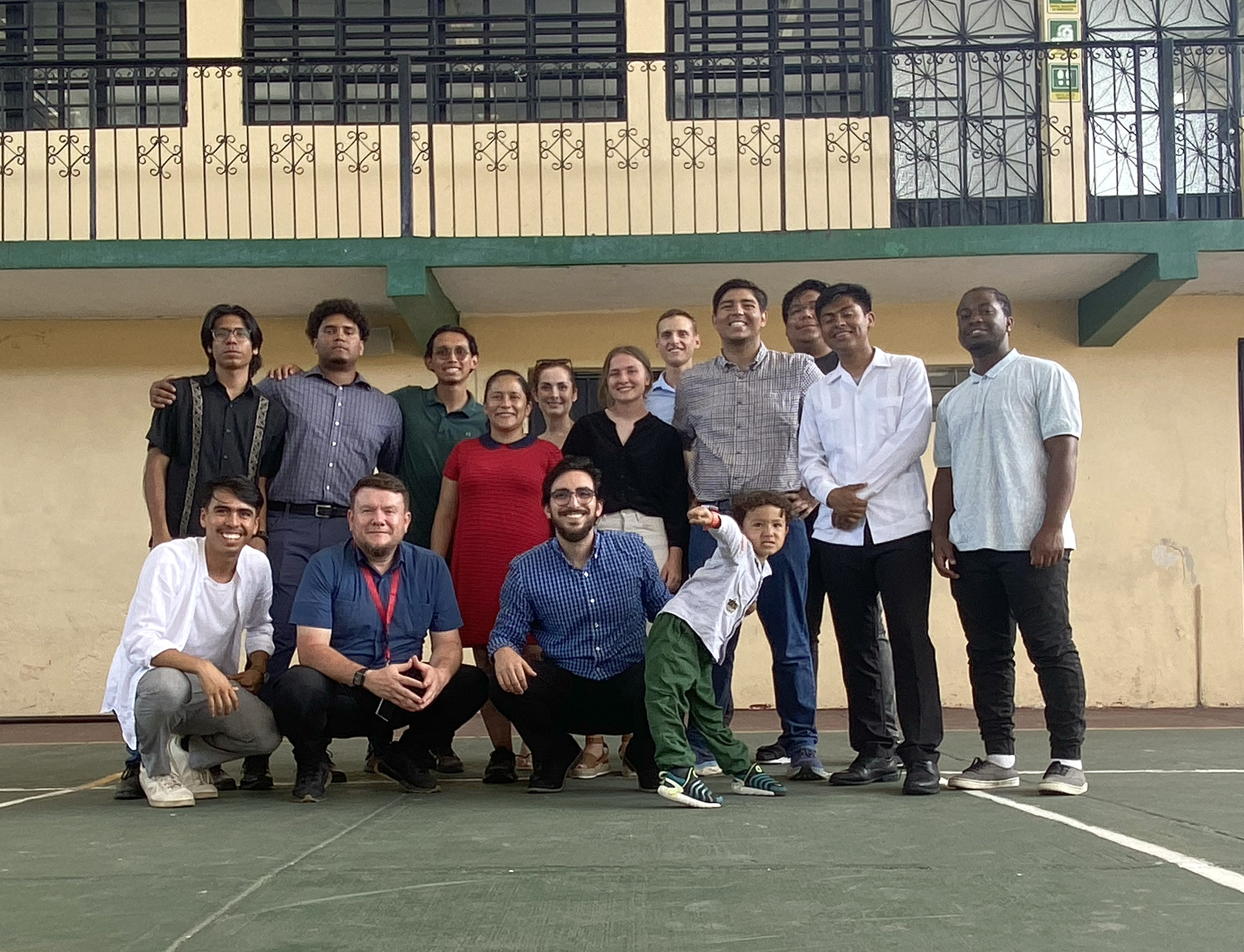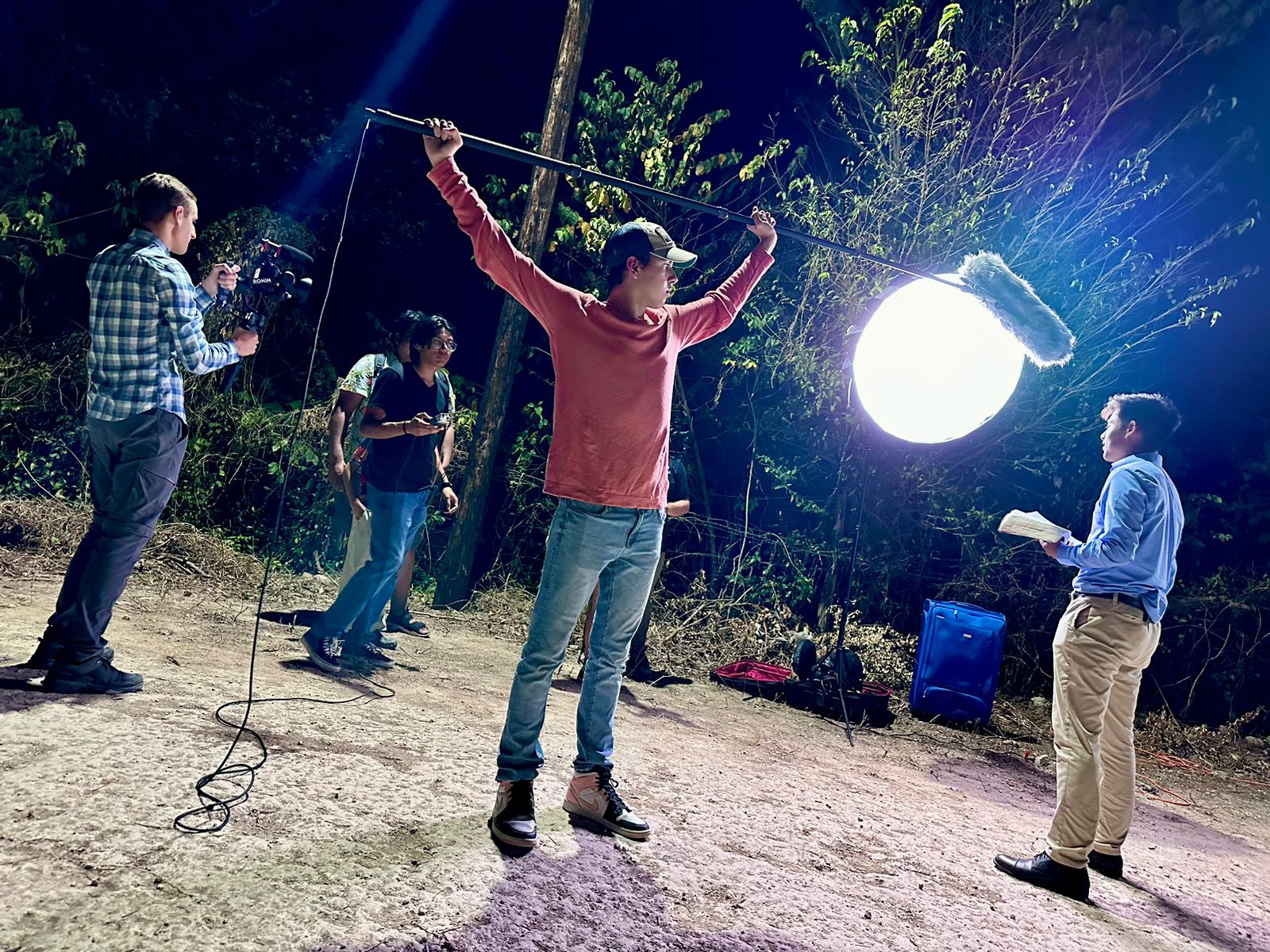Media Missionaries Partner for Television Series
News
News



A group of 24 students went on a mission trip through Southern Adventist University’s Evangelistic Resource Center (ERC) earlier this year to preach a series of sermons in Chetumal, Mexico. Joining them was a much smaller team of five students, who were going as a media missionary team to shoot a ten-episode evangelistic television series for Hope Channel Inter-America. They couldn’t do this ambitious project alone, however, so they teamed up with students from Montemorelos University in Mexico, as well as staff from Hope Channel Inter-America. The combined media team completed the project before parting ways at the end of the trip.
How It Started
The idea for a media-focused mission trip began in Winter 2022, when Pablo Fernandez, professor in the School of Journalism and Communication at Southern, reached out to Hope Channel International. He wanted to see if there could be an opportunity for students to be exposed to media ministry outside of the United States, in order to broaden their horizons and give them a chance to serve.
“I’ve seen how our church—through Hope Channel, unions, and conferences—has done a lot of media work that, in the United States, often just translates to written work,” Fernandez says. “We have good magazines and great award-winning articles, but video initiatives have largely been independent. Other parts of the world are more focused on video production, and we could definitely learn from them.
Fernandez began contacting several media fields across the globe and was able to partner with one of Hope Channel Inter-America’s studios at Montemorelos University. This studio particularly relies on student work, and there was a team of students who were assigned to produce a television series during the Winter 2024 semester. However, they were short on crew, which is where Southern comes into the picture.
The Collaboration Begins
Fernandez began conversations with Hope Channel Inter-America leaders Abel Marquez, director of Communications, and Lizbeth Elejade, director of Programming, about bringing Southern students to help with the television series. The collaborative project between Southern and Montemorelos University was approved, but it quickly came to light how expensive it would be for Southern students to travel to Montemorelos. Additionally, ERC was already offering a mission trip to Chetumal during spring break for half of the cost.
Elejade proposed that if Southern’s production students partnered with ERC and went with them to Chetumal, Hope Channel Inter-America may be able to sponsor the students from Montemorelos University to join them.
Fernandez then met with Raul Rivero, director of ERC and associate director of the
Pierson Institute of Evangelism, and Alan Parker, professor at Southern’s School of
Religion and director of the Pierson Institute of Evangelism, to discuss the possibility
of tagging along on ERC’s trip and focusing the project on the sermons that would
be preached in Chetumal. They came to an agreement that five students could join the
trip on an ERC scholarship to be part of the production team. Elejade and Marquez
were able to have Hope Channel Inter-America sponsor the students from Montemorelos
University’s production team to meet Southern’s team in Chetumal.
“After two years of work, God made all the variables come together,” Fernandez says.
“It is undoubtedly evidence of God’s hand being in this project.”
The Mission Trip
At 3:30 a.m. on March 8, the Southern team began their trip to Mexico. After flying into Cancún and taking a six-hour bus ride, they arrived in Chetumal. The work began immediately—the five Southern students and two sponsors, plus the five Montemorelos University students and three sponsors, joined to create a 15-person production team, which was then split into three smaller teams of five in order to cover various filming locations. Each small team contained a mix of crew from Southern and Montemorelos University.
“The students from Montemorelos were really cool, and even though there was a language barrier we still found a way to communicate with each other while we were working,” says Larron Matheson, junior mass communication-media production major at Southern. “It was fun getting to learn about their culture because they taught me some of their customs and made me try new snacks and food.”
Matheson says that initially, producing was stressful for him because he wasn't fully sure what he was doing, but that he became confident as time went on. “The productions became a routine and I really enjoyed it,” Matheson says. “The best part of it all was when we would go to the churches where the students were preaching, and we would interview the visitors and capture their testimonies. We saw many of those same people accept Jesus and be baptized on Sabbath.
Transforming Hearts Through Television
The television series will contain a set-up episode showing the students’ journey, a behind-the-scenes episode with interviews, and eight episodes featuring condensed versions of the sermons, the experiences of the students who preached, and some moments from the trip. The goal of the series is to inspire transformation in the hearts of the audience by seeing the spiritual transformation that the students experienced on the trip.
“The audience will see 24 college kids who didn’t feel ready to preach but were willing to serve, being transformed in the process,” Fernandez says. “That in itself will be impactful. These students could have spent spring break however they wanted, but they chose to spend it serving and sharing Christ with others.”
Elejade says that it was also a great experience for the team from Montemorelos. “We were really, really happy with what happened there, and we absolutely have to do it again because it was so enriching for both sides,” Elejade says. “We believe in working with the students because they are the seeds for the future professional world, and you could see the results from what they are learning in the classroom being applied.”
As a result of the ERC evangelistic campaign during the mission trip, about 30 individuals were baptized. “There are so many powerful stories that happen on ERC trips that people are not aware of,” Rivero says. “The production that took place to capture some of these stories is an amazing opportunity to bring these stories to light, and we hope that this TV series can multiply the outreach done by each of the students in Chetumal.”
Looking Ahead
According to Elejade and Fernandez, this trip is the pilot of media-focused mission trips and collaboration between different universities. Southern’s School of Journalism and Communication focused its 2024 Giving Day on sending its students out on future mission trips in order to serve through media evangelism. Every $1,000 raised allows one more student to serve as a missionary in next year’s trip. If you or someone you know would like to help make this possible, contact the School of Journalism and Communication at Southern Adventist University at 423.236.2330 or communicator@southern.edu.
Stay tuned for the coming release of “Proyecto Chetumal” (Project Chetumal) on hopechannelinteramerica.org or the Hope Channel Inter-America broadcast channel.
The views and opinions of campus guests do not necessarily reflect the official policy or position of Southern Adventist University. An individual's or group's invitation to speak or present on campus should not be regarded as a university endorsement of their philosophies and beliefs.